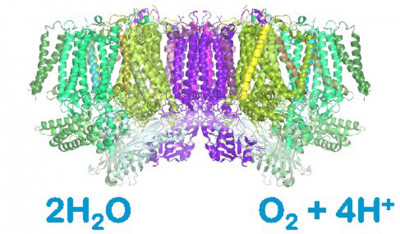フタロシアニンは、再生可能エネルギー生産、センシング、ナノメディシンなどに使用されています。アールト大学の研究者たちは、固体合成法を用いることで、高沸点有機溶媒を最小限に抑え、より環境に優しい方法でこの色素を製造する方法を実証しました。 Phthalocyanines are used in renewable energy production, sensing, nanomedicine and more. Researchers at Aalto University have demonstrated how the dye can be produced in a greener way that minimizes high-boiling organic solvents, by using solid-state synthesis instead.
2022-08-19 フィンランド・アールト大学
研究者たちは、固体合成によって、より環境にやさしい方法でフタロシアニンを製造できることを実証した。
欧州連合(EU)の産業界だけでも、年間1万トンのDMAEがさまざまなプロセスで使用されている。アールトの研究者が導入したこの新しい方法では、溶媒の量が99%以上削減される。
フタロニトリルに数滴のDMAEと亜鉛テンプレートを加えてボールミル処理した後、固体の反応混合物を55℃のオーブンで1週間、または100℃で48時間熟成させた。
従来の方法では、溶媒を160〜250℃の間で加熱し、費やした材料と時間の割に全体の収率はかなり低い。研究者たちが開発した環境にやさしい方法では、溶媒の大部分を除去し、低温で反応を行うことにより、時空間収率を4倍に高めた。
<関連情報>
- https://www.aalto.fi/en/news/a-greener-route-to-blue-a-new-method-drastically-reduces-the-amount-of-solvent-needed-to
- https://onlinelibrary.wiley.com/doi/10.1002/anie.202209033
より環境に優しいブルーへの道:フタロシアニンの固相合成について A Greener Route to Blue: Solid-State Synthesis of Phthalocyanines
Daniel Langerreiter,Prof. Mauri A. Kostiainen,Dr. Sandra Kaabel,Dr. Eduardo Anaya-Plaza
Angewandte Chemie International Edition Published: 25 July 2022
DOI:https://doi.org/10.1002/anie.202209033
Abstract
In this manuscript, the first high-yielding solid-state synthesis of a phthalocyanine dye is shown. These organic dyes are broadly applicable, while the inherent low solubility has so far challenged the sustainability of their synthesis. The developed solid-state approach for the synthesis of tBu-phthalocyanine in catalytic amounts of dimethylaminoethanol, avoids bulk solvents and harsh temperatures, while achieving excellent yields.
Phthalocyanines are important organic dyes with a broad applicability in optoelectronics, catalysis, sensing and nanomedicine. Currently, phthalocyanines are synthetized in high boiling organic solvents, like dimethylaminoethanol (DMAE), which is a flammable, corrosive, and bioactive substance, miscible with water and harmful to the environment. Here we show a new solid-state approach for the high-yielding synthesis of phthalocyanines, which reduces up to 100-fold the amount of DMAE. Through systematic screening of solid-state reaction parameters, carried out by ball-milling and aging, we reveal the influence of key variables—temperature, presence of a template, and the amount and role of DMAE in the conversion of tBu phthalonitrile to tetra-tBu phthalocyanine. These results set the foundations to synthesize these high-performance dyes through a greener approach, opening the field of solid-state synthesis to a wider family of phthalocyanines.




